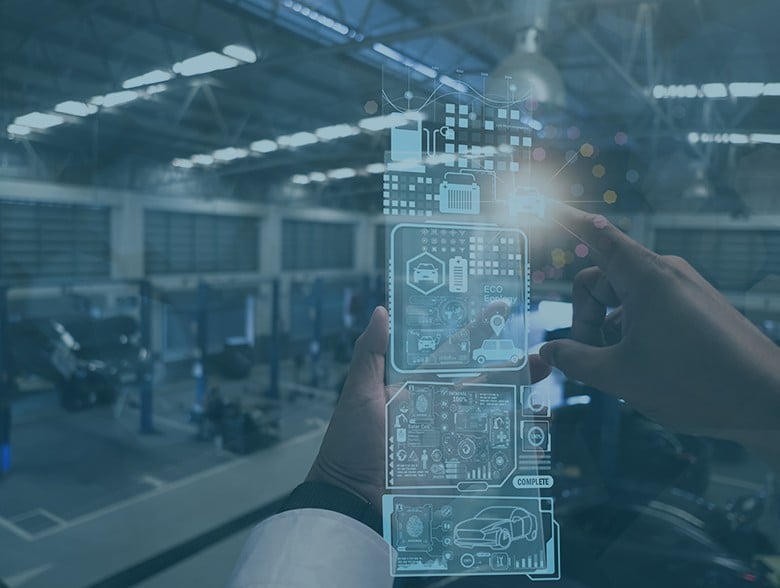By Milica D. Djekic
The industrial control systems (ICS) are usually the part of critical infrastructure to every country or nation. These systems have passed through information era and today – the majority of them has the access to the web or uses some of the internet techniques to communicate within each other. Here, how we would come to the Internet of Things (IoT) concept amongst the ICS. The role of the internet signal within ICS is clear! It serves to transmit the messages through the ICS network and make the asset’s devices talk with each other. Through this chapter, we would want to discuss how the IoT deals with the ICS and also provide a better insight into some of the security’s concerns of these systems.
What are the ICS?
The systems being applied in an industry could include industrial control systems (ICS), supervisory control and data acquisition (SCADA) systems, distributed control systems (DCS) and so on. All these systems would strongly get correlated with the control engineering theory and use the minimum of human effort to operate on. The main characteristics of ICS are their stability and controllability. In other word, the industry systems would deal with the plant and its controller. This synergy of plant and its controller would make a control system which main role would be to obtain operations automatically.
Basically, stability and controllability are the attributes of a plant, while controllers rather deal with their control algorithms. The design of control systems is not that easy thing and usually requires lots of research and development in order to produce something that would work as required. The fact is that industrial systems could get controlled on a plant or remotely depending on the industry’s asset needs. As it’s known, the plants usually could be electric motors, turbines, some mechatronics objects or even boilers and heat exchangers depending which sort of process should be controlled. On the other hand, controllers are closely correlated with the computing units and can cover industrial PCs, programmable logic controllers (PLCs) or any other variations of industrial smart enforcers.
The figure on our right demonstrates how the control office within some power plant appears and why this sort of infrastructure demands highly skillful operators to manage those industry’s processes. Indeed, any type of dealing with the ICS needs a great skill and even employees who maintain the plant directly need to know how to deal with – let’s say water waste systems, power plants, nuclear reactors or another sort of a control system. So commonly, the ICS cannot work independently and many of them would need some sort of communication protocols to do information sharing or simple talking between their sub-stations. For such a purpose, modern industrial systems would use the internet signal and so often – get managed remotely. In other words, it’s clear how industrial systems could get correlated with the IoT.
The link between the ICS and IoT
As we would mention before, the ICS are strongly linked with the IoT for a reason that many industrial assets would get the web connections. As we know, the entire human kind got vitally dependable on new technologies, so the similar case is with the industrial infrastructure. It’s clear that if you talk about the factory being controlled to produce something – you need the internet connection at least to send an e-mail. Next, the purpose of the entire factory would not be to make an e-correspondence with the outer world, but rather force its production lines to work and produce their final products. Finally, that sort of process cannot get imagined without good communication protocols that would usually use the web signal to talk to the rest of the system.
So, the question here would be if the ICS already live in the IoT age. The answer to this question is partially YES! Why partially? The main reason to that would be that the curve of a progress is not equally distributed within all parts of the world. The areas using smart technology including sensors, actuators, measuring devices and diverse sorts of cyber signals would definitely live the IoT age, while the rest of the globe would try to reach such a level of development. Finally, industrial control systems dealing with the new technologies are the privilege to some countries, but also the big threat to their security. The reason to that is those systems could potentially get hacked from the outside if not managed to follow the best practice.
The security’s challenges of ICS
As we would suggest above – the main security’s challenges of ICS could be addressed to their communication as well as safety procedures that should get followed during the working process. Everyone would agree that the best practice is something that should get applied within the industry’s infrastructure. Many research publications would indicate how the networks within the industrial asset should get configured and why it’s important to appropriately set up your both – hardware and software firewall – as well as deal with the strong authentication.
The big concern here would also be the existing IoT search engines that would offer so convenient access to IoT devices including the ICS computers. In addition, that could get critical for a reason of so many terrorist and organized crime groups that could take advantage over those technological advancements and so easily try to exploit the weaknesses of such an industrial system. Finally, we would suggest that those tools could get used to discover some industrial asset and consequently organize the hacker’s attack to that. This would not be such a big concern if those systems are not the part of the nation’s critical infrastructure making many people being dependable on them. In other words, the best practice should offer us some suggestions how those systems could get invisible to those tools and one of the most helpful advices would be to close your inbound ports. We intend to talk about these strategies further through this research material.
The concluding remarks
It’s obvious that cyber technologies are getting the part of both – our private and business lives, so it’s significant to understand that the ICS are also the segment of that tendency. It’s crucially important to get some sort of awareness about the significance of these systems to the entire nation. Their role is undoubtedly critical to all of us, so we should put a lot of effort to protect something being so strategically important to everyone. At the end, many researchers would suggest that following the best practice could put our risk at the lower level, so it’s not that bad idea to take into consideration some of these indications.
References:
[1] Djekic, M. D., 2017. The Internet of Things: Concept, Application and Security. LAP LAMBERT Academic Publishing.
[2] Djekic, M. D., 2021. The Digital Technology Insight. Cyber Security Magazine
[3] Djekic, M. D., 2021. Smart Technological Landscape. Cyber Security Magazine
[4] Djekic, M. D., 2021. Biometrics Cyber Security. Cyber Security Magazine
[5] Djekic, M. D., 2020. Detecting an Insider Threat. Cyber Security Magazine
[6] Djekic, M. D., 2021. Communication Streaming Challenges. Cyber Defense Magazine
[7] Djekic, M. D., 2021. Channelling as a Challenge. Cyber Defense Magazine
[8] Djekic, M. D., 2021. Offense Sharing Activities in Criminal Justice Case. Cyber Defense Magazine
[9] Djekic, M. 2019. The Informant Task. Asia-Pacific Security Magazine
[10] Djekic, M. D., 2020. The Importance of Communication in Investigations. International Security Journal
[11] Djekic, M. D. 2019. The Purpose of Neural Networks in Cryptography, Cyber Defense Magazine
[12] Djekic, M. D. 2020. Artificial Intelligence-driven Situational Awareness, Cyber Defense Magazine
[13] Djekic, M. D. 2019. The Perspectives of the 5th Industrial Revolution, Cyber Defense Magazine
[14] Djekic, M. D. 2019. The Email Security Challenges, Cyber Defense Magazine
[15] Djekic, M. D. 2016. The ESIS Encryption Law, Cyber Defense Magazine
[16] Đekić, M. D., 2021. The Insider’s Threats: Operational, Tactical and Strategic Perspective. LAP LAMBERT Academic Publishing.
About The Author
 Milica D. Djekic is an Independent Researcher from Subotica, the Republic of Serbia. She received her engineering background from the Faculty of Mechanical Engineering, University of Belgrade. She writes for some domestic and overseas presses and she is also the author of the books “The Internet of Things: Concept, Applications and Security” and “The Insider’s Threats: Operational, Tactical and Strategic Perspective” being published in 2017 and 2021 respectively with the Lambert Academic Publishing. Milica is also a speaker with the BrightTALK expert’s channel. She is the member of an ASIS International since 2017 and contributor to the Australian Cyber Security Magazine since 2018. Milica’s research efforts are recognized with Computer Emergency Response Team for the European Union (CERT-EU), Censys Press, BU-CERT UK and EASA European Centre for Cybersecurity in Aviation (ECCSA). Her fields of interests are cyber defense, technology, and business. Milica is a person with disability.
Milica D. Djekic is an Independent Researcher from Subotica, the Republic of Serbia. She received her engineering background from the Faculty of Mechanical Engineering, University of Belgrade. She writes for some domestic and overseas presses and she is also the author of the books “The Internet of Things: Concept, Applications and Security” and “The Insider’s Threats: Operational, Tactical and Strategic Perspective” being published in 2017 and 2021 respectively with the Lambert Academic Publishing. Milica is also a speaker with the BrightTALK expert’s channel. She is the member of an ASIS International since 2017 and contributor to the Australian Cyber Security Magazine since 2018. Milica’s research efforts are recognized with Computer Emergency Response Team for the European Union (CERT-EU), Censys Press, BU-CERT UK and EASA European Centre for Cybersecurity in Aviation (ECCSA). Her fields of interests are cyber defense, technology, and business. Milica is a person with disability.


